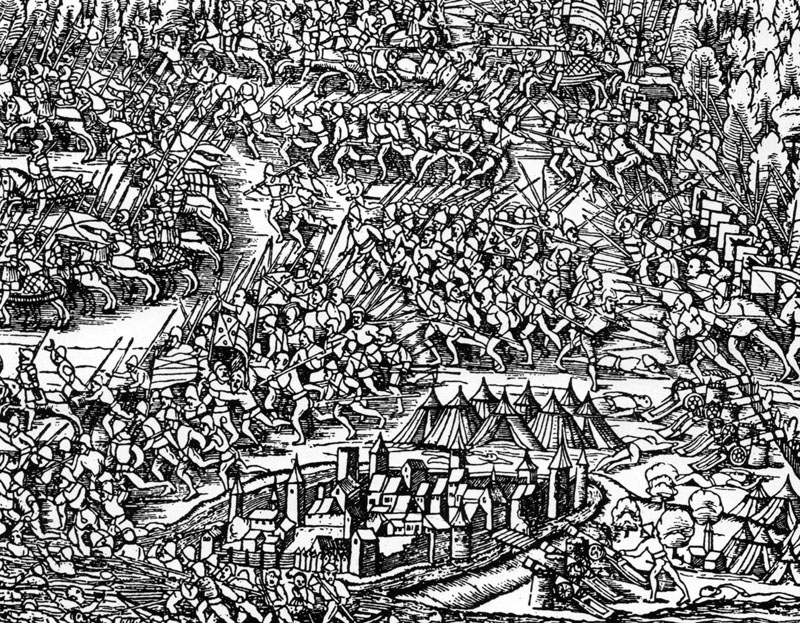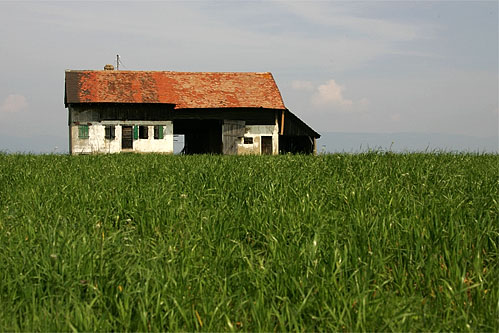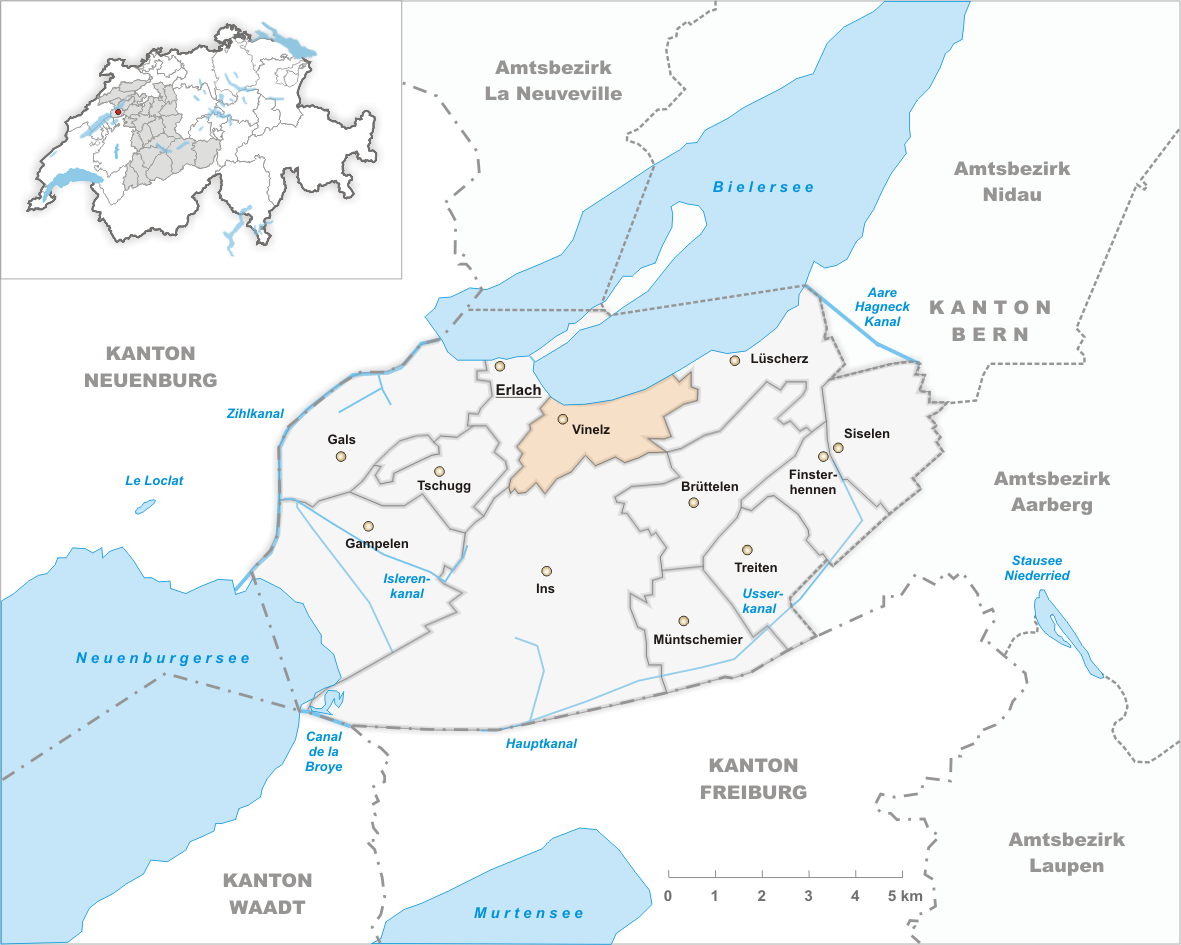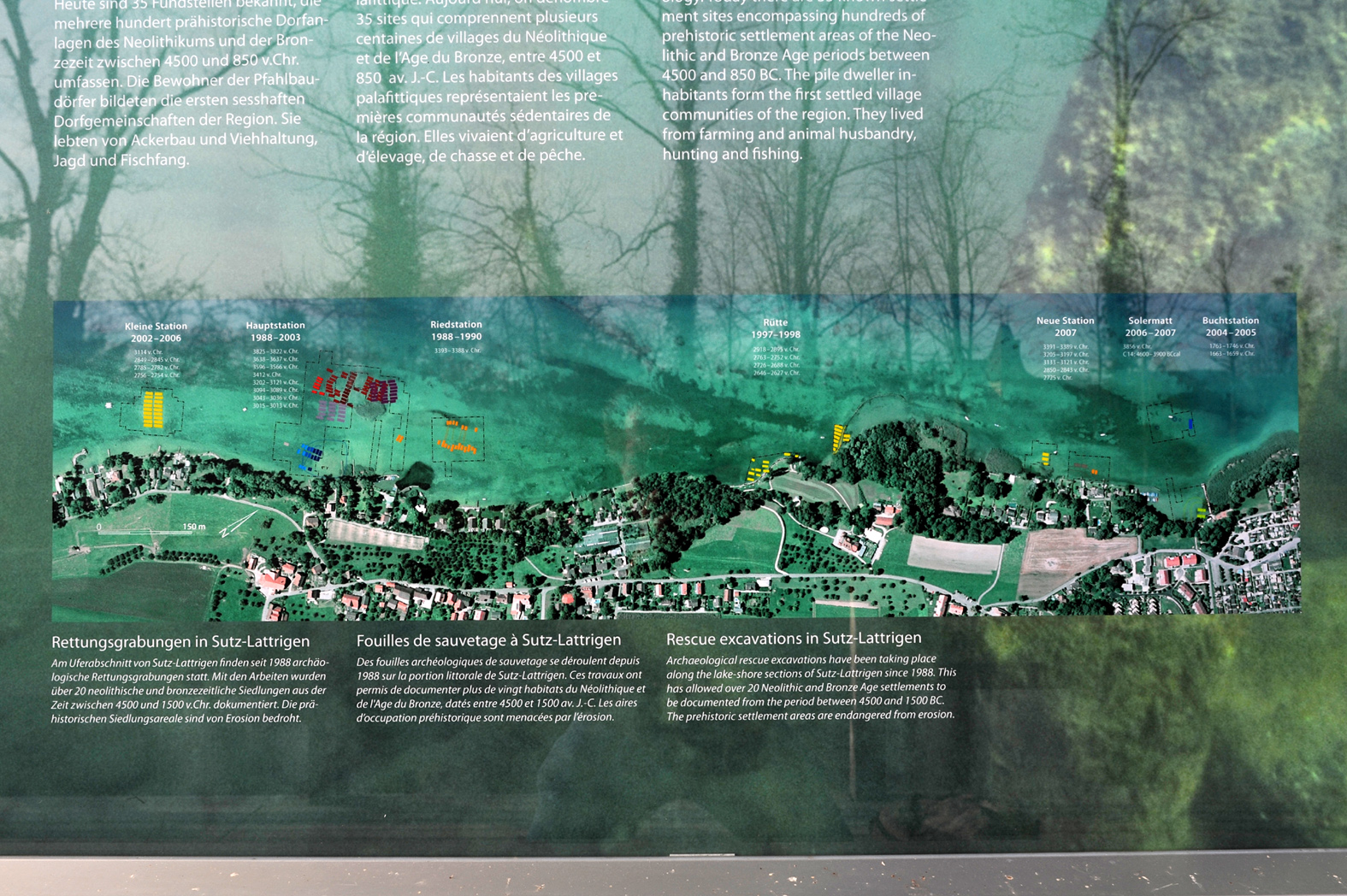|
Prehistoric Pile Dwellings Around The Alps
Prehistoric pile dwellings around the Alps are a series of prehistoric pile dwelling (or stilt house) settlements in and around the Alps built from about 5000 to 500 BC on the edges of lakes, rivers or wetlands. In 2011, 111 sites located variously in Switzerland (56), Italy (19), Germany (18), France (11), Austria (5) and Slovenia (2) were added to the UNESCO World Heritage Site list. In Slovenia, these were the first World Heritage Sites to be listed for their cultural value. Excavations conducted at some of the sites have yielded evidence regarding prehistoric life and the way communities interacted with their environment during the Neolithic and Bronze Ages in Alpine Europe. These settlements are a unique group of exceptionally well-preserved and culturally rich archaeological sites, which constitute one of the most important sources for the study of early agrarian societies in the region. Contrary to popular belief, the dwellings were not erected over water, but on nearby mar ... [...More Info...] [...Related Items...] OR: [Wikipedia] [Google] [Baidu] |
Pfahlbaumuseum Unteruhldingen
Pfahlbaumuseum Unteruhldingen (German language, German for 'Stilt house museum') is an archaeological open-air museum on Lake Constance (Bodensee) in Unteruhldingen, Germany, consisting of reconstructions of stilt houses or lake dwellings from the Neolithic Europe, Neolithic and Bronze Age Europe, Bronze Age. Museum The museum consists of a number of exhibits displaying archeological finds from the area and period. Reconstructions The archaeological open-air museum is laid out over a large area with reconstructions of lake pile dwellings from 4000 BC to 850 BC. The museum was opened in 1922 with various reconstructions being added up until the present day. Stone age houses “Riedschachen/Schussenried” In 1922, the first two stilt houses were erected. They are based on archaeological excavations in a bog close to the Federsee near Bad Schussenried in 1920 where remains of a Neolithic settlement of 4000 BC were found. Bronze age village “Bad Buchau” Is an idealistic r ... [...More Info...] [...Related Items...] OR: [Wikipedia] [Google] [Baidu] |
Beinwil Am See
Beinwil am See is a municipality in the district of Kulm in the canton of Aargau in Switzerland. History There are traces of neolithic, Hallstatt, Roman and Alamanni settlements in or near Beinwil. However, Beinwil am See is first mentioned in 1036 as ''Beinwile''. In 1045 it was mentioned as ''Peinuuilare''. The noble von Beinwil family is first mentioned in 1153. This family was, in succession, vassals to the Lenzburg, Kyburg and Habsburgs before becoming extinct in the mid-14th Century. The family castle has disappeared. The power of '' Zwing und Bann'' ( Manor rights as well as low justice) over the village, were inherited in about 1300 by the Stewards of Wolhusen, then donated in 1501 to Beromünster, and sold in 1520 to Bern. The Counts of Hallwyl owned land on the lake (''Dingstätte'') to safeguard their maritime rights, which were first stipulated in 1419. Starting with the conquest of the Aargau in 1415 by Bern, until the French conquest and creation of the Helvet ... [...More Info...] [...Related Items...] OR: [Wikipedia] [Google] [Baidu] |
Collonge-Bellerive
Collonge-Bellerive () is a municipality of the Canton of Geneva, Switzerland. History Collonge-Bellerive is first mentioned in 1153 as ''Collonges''. In 1275 Saint-Maurice is first mentioned as ''Sancto Mauricio'' and Vésenaz first in 1314 as ''Vysinaz''. Until 1799 it was known as ''Collonge sur Bellerive''. It became part of the Canton of Geneva in 1816. Geography Collonge-Bellerive has an area, , of . Of this area, or 37.1% is used for agricultural purposes, while or 4.1% is forested. Of the rest of the land, or 58.5% is settled (buildings or roads), or 0.2% is either rivers or lakes and or 0.3% is unproductive land.Swiss Federal Statistical Office-Land Use Statistics 2009 data accessed 25 March 2010 Of the built up area, industrial buildin ... [...More Info...] [...Related Items...] OR: [Wikipedia] [Google] [Baidu] |
Prez, Switzerland
Prez () is a municipality in the district of Sarine in the canton of Fribourg in Switzerland. On 1 January 2020, the former municipalities of Corserey, Noréaz and Prez-vers-Noréaz merged to form the new municipality of Prez. World heritage site The former municipality of Noréaz is home to the En Praz des Gueux prehistoric pile-dwelling (or stilt house) settlements that are part of the Prehistoric Pile dwellings around the Alps UNESCO World Heritage Site. En Praz des Gueux is the only prehistoric lakeside settlement on the banks of a small lake in the Canton of Fribourg. The site is dated to the classic Cortaillod era (4000-3500 BC). The site was discovered by accident in 1971 in a boggy area near the present shore of the Lac de Seedorf. Under a layer of about of peat Peat (), also known as turf (), is an accumulation of partially decayed vegetation or organic matter. It is unique to natural areas called peatlands, bogs, mires, moors, or muskegs. The peat ... [...More Info...] [...Related Items...] OR: [Wikipedia] [Google] [Baidu] |
Murten
Murten (German) or Morat (French, ; frp, Morât ) is a bilingual municipality and a city in the See district of the canton of Fribourg in Switzerland. It is located on the southern shores of Lake Morat (also known as Lake Murten). Morat is situated between Neuchâtel and Fribourg and is the capital of the See/Lac District of the canton of Fribourg. It is one of the municipalities with a majority (about 75%) of German speakers in the predominantly French-speaking Canton of Fribourg. On 1 January 1975 the former municipality of Burg bei Murten merged into the municipality of Murten.Nomenklaturen – Amtliches Gemeindeverzeichnis der Schweiz accessed 9 February 2013 It was followed on 1 January 1991 by the former municipality of [...More Info...] [...Related Items...] OR: [Wikipedia] [Google] [Baidu] |
Haut-Vully
Haut-Vully ( frp, Hiôt-Vulyi) is a former municipality in the district of See/Lac in the canton of Fribourg in Switzerland. Until 1977, it was officially known as ''Vully-Le-Haut''. Its German name of Oberwistenlach is now little used. On 1 January 2016 the former municipalities of Bas-Vully and Haut-Vully merged to form Mont-Vully. History Haut-Vully is first mentioned around 968-85 as ''Vuisliacense''. In 1453 it was mentioned as ''Vuilliez''. Geography Haut-Vully had an area, , of . Of this area, or 70.4% is used for agricultural purposes, while or 13.2% is forested. Of the rest of the land, or 13.1% is settled (buildings or roads), or 2.5% is either rivers or lakes and or 0.7% is unproductive land.Swiss Federal Statistical Office-Land Use Statistics ... [...More Info...] [...Related Items...] OR: [Wikipedia] [Google] [Baidu] |
Greng
Greng is a municipality in the district of See/Lac in the canton of Fribourg in Switzerland. History Greng is first mentioned in 1349 as ''Groyn''. Geography Greng has an area, , of . Of this area, or 76.3% is used for agricultural purposes, while or 10.3% is forested. Of the rest of the land, or 14.4% is settled (buildings or roads) and or 3.1% is unproductive land.Swiss Federal Statistical Office-Land Use Statistics 2009 data accessed 25 March 2010 Of the built up area, housing and buildings made up 11.3% and transportation infrastructure made up 3.1%. Out of the forested land, 8.2% of the total land area is heavily forested and 2.1% is covered with orchards or small clusters of trees. Of the agricultural land, 60.8% is used for growing crops a ... [...More Info...] [...Related Items...] OR: [Wikipedia] [Google] [Baidu] |
Gletterens
Gletterens () is a municipality in the district of Broye, in the canton of Fribourg, Switzerland. It is home to the Les Grèves prehistoric pile-dwelling (or stilt house) settlements that are part of the Prehistoric Pile dwellings around the Alps UNESCO World Heritage Site. History Gletterens is first mentioned in 1239 as ''Lieterins''. Geography Gletterens has an area, , of . Of this area, or 51.7% is used for agricultural purposes, while or 16.1% is forested. Of the rest of the land, or 20.2% is settled (buildings or roads) and or 12.3% is unproductive land. 2009 data . Retrieved 25 March 2010 Of the built up area, housing and buildings made up 12.0% and transportation infrastructure made up 2.7%. while parks, green belts and sports fields made up 5.1%. Out of the forested land, all of the forested ... [...More Info...] [...Related Items...] OR: [Wikipedia] [Google] [Baidu] |
Vinelz
Vinelz is a municipality in the Seeland administrative district in the canton of Bern in Switzerland. History Vinelz is first mentioned in 1228 as ''Fenis''. The municipality was formerly known by its French name ''Fenil'', however, that name is no longer used. There were extensive Neolithic and Bronze Age settlements along the shore of Lake Biel, which stretch into Lüscherz. Inland an Early Bronze Age settlement has been discovered at Schattewil, while Roman settlements were found at Mieschzälg and Flachseren. During the Middle Ages it was part of the '' Herrschaft'' of Erlach. In 1474 all the Erlach lands, including Vinelz, were acquired by Bern. Under Bernese rule it became part of the new bailiwick of Erlach. In 1691, Emanuel Gaudard, a citizen of Bern, built the ''Landsitz'' (country manor house) Obere Budlei in the village. The village church of St. Mary's was first mentioned in 1228. It was probably founded by the Counts of Fenis, who ruled from the nearby F ... [...More Info...] [...Related Items...] OR: [Wikipedia] [Google] [Baidu] |
Twann-Tüscherz
Twann-Tüscherz or Douanne-Daucher in French is a municipality in the Biel/Bienne administrative district in the canton of Bern in Switzerland. On 1 January 2010 the municipalities of Tüscherz-Alfermée and Twann merged into the municipality of Twann-Tüscherz. History Twann is first mentioned in 1185 as ''Duana'' and again in 1225 as ''Tuanna''. Tüscherz is first mentioned around 1230 as ''Tusschiers'' and in 1267 as ''Tuschers'' while Alfermée was first mentioned in 1276 ''Alphermme''. Twann Just outside the Twann railway station is a large and well preserved neolithic lakeside settlement. It was discovered in the mid 19th century and in 1974-76 about 10% of the total site was excavated. Almost 20 different village existed at the site between 3838 and 2976 BC. The longest a single village was inhabited was only 24 years. The small huts () were only temporary and most had to be repaired after less than four years and replaced after sixteen. The huts stood in serried ... [...More Info...] [...Related Items...] OR: [Wikipedia] [Google] [Baidu] |
Sutz-Lattrigen
Sutz-Lattrigen is a municipality in the Biel/Bienne administrative district in the canton of Bern in Switzerland. It is home to a number of Neolithic and Bronze Age lake shore archeological sites, including one that is part of a UNESCO World Heritage Site. History The municipality is situated on the shore of Lake Biel. In 2007, the remains of the oldest known building in Switzerland – a pile dwelling dated to 3863 BC – were discovered in the lake near Sutz-Lattrigen. The shoreline was occupied by a Corded ware culture settlement through the Neolithic and into the Bronze Age. In 2011 the remains of the settlement was included in an UNESCO World Heritage Site. Sutz village is first mentioned in 1228 as ''Soz''. In 1262 or 1263 it was mentioned as ''Souz''. Lattrigen village was first mentioned in 1270 as ''Lattringun''. During the Middle Ages the villages were both part of the lands of the Counts of Neuchâtel-Nidau. In 1398, the two villages and much of the surround ... [...More Info...] [...Related Items...] OR: [Wikipedia] [Google] [Baidu] |
Seedorf, Bern
Seedorf is a municipality in the Seeland administrative district in the canton of Bern in Switzerland. History Seedorf is first mentioned around 1173-80 as ''Sedorf''. The area around Seedorf was home to a number of prehistoric settlements. The oldest may be the settlement at Lobsigensee from the later half of the 4th millennium BC. It is now a UNESCO World Heritage Site. Other prehistoric sites include; a Hallstatt burial mound at Einschlag, a La Tene skeleton near the Seedorf school house and an early and high medieval settlement near the church. Except for the village of Frieswil, the entire Seedorf parish belonged to Count Udelhard of Saugern. In 1131, he granted the entire parish to what would become Frienisberg Abbey. Initially he granted his land at Frienisberg to the Cistercian Lützel Abbey. In 1138, the Lützel Abbey sent settlers to Frienisberg to found a new abbey. The new abbey remained small and struggled until the first half of the 13th century, when a num ... [...More Info...] [...Related Items...] OR: [Wikipedia] [Google] [Baidu] |
.jpg)









